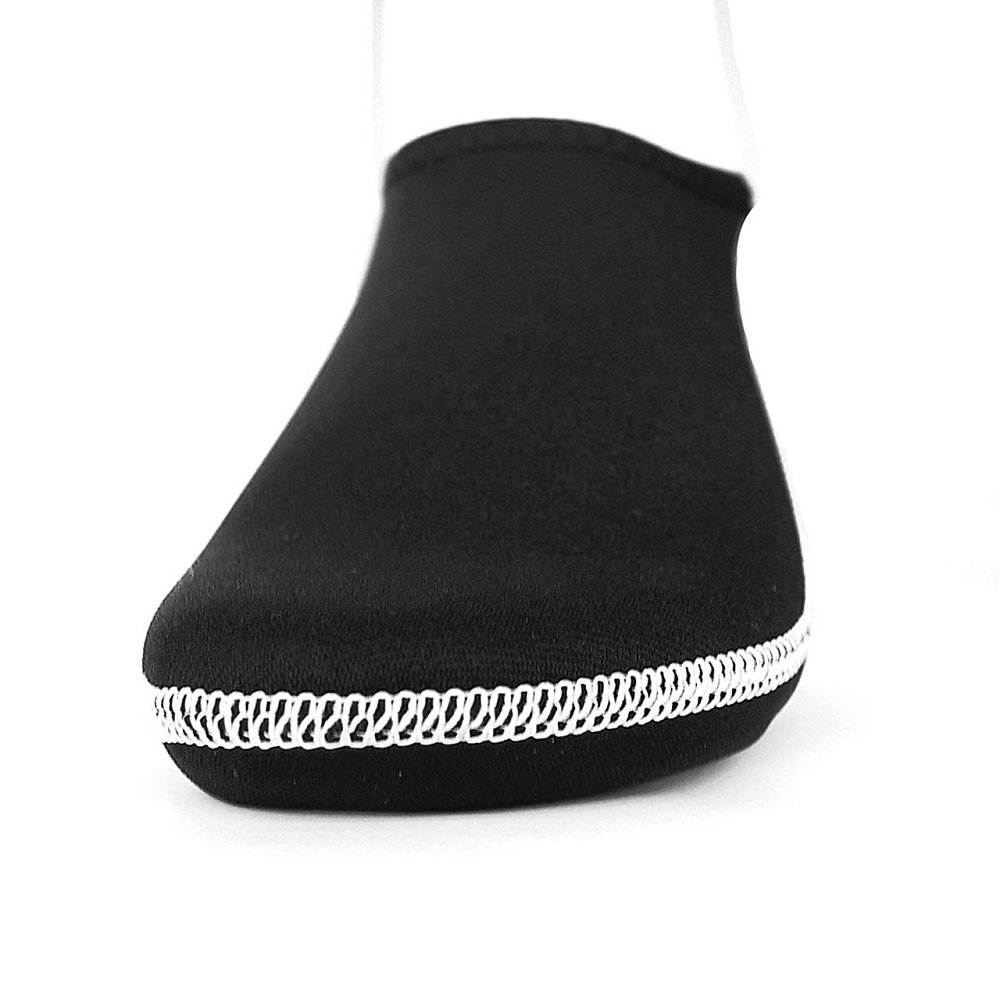Neoprene socks have gained popularity in recent years for their unique properties and various applications. Made from a synthetic rubber material, neoprene is commonly associated with wetsuits and diving gear. However, neoprene socks offer a range of benefits that make them suitable for various activities beyond water sports. In this guide, we will explore the advantages of neoprene socks, their uses in different conditions, and how to choose the right pair for your needs.
What Are Neoprene Socks?
Neoprene socks are specialized footwear designed for water and outdoor activities. They are made from neoprene, a synthetic rubber known for its durability and flexibility. These socks are often used in environments where protection against cold, water, and rough terrains is essential.
Composition and Material
Neoprene socks are crafted from neoprene, a stretchy and resilient synthetic fabric. Neoprene is often reinforced with nylon or polyester for added durability. This combination allows the socks to retain warmth, provide waterproofing, and maintain their shape even in harsh conditions. Neoprene’s unique cellular structure traps air, enabling insulation in cold environments while remaining lightweight.
How Neoprene Differs from Other Sock Materials
Neoprene socks differ from traditional wool or cotton socks in several ways. Unlike cotton, which absorbs water, neoprene repels moisture and keeps feet dry. Wool provides warmth but lacks neoprene’s waterproof properties. Additionally, neoprene is far more flexible and durable, making it ideal for outdoor sports and activities. Its insulating capabilities remain effective even when wet, setting it apart from most natural fiber socks.
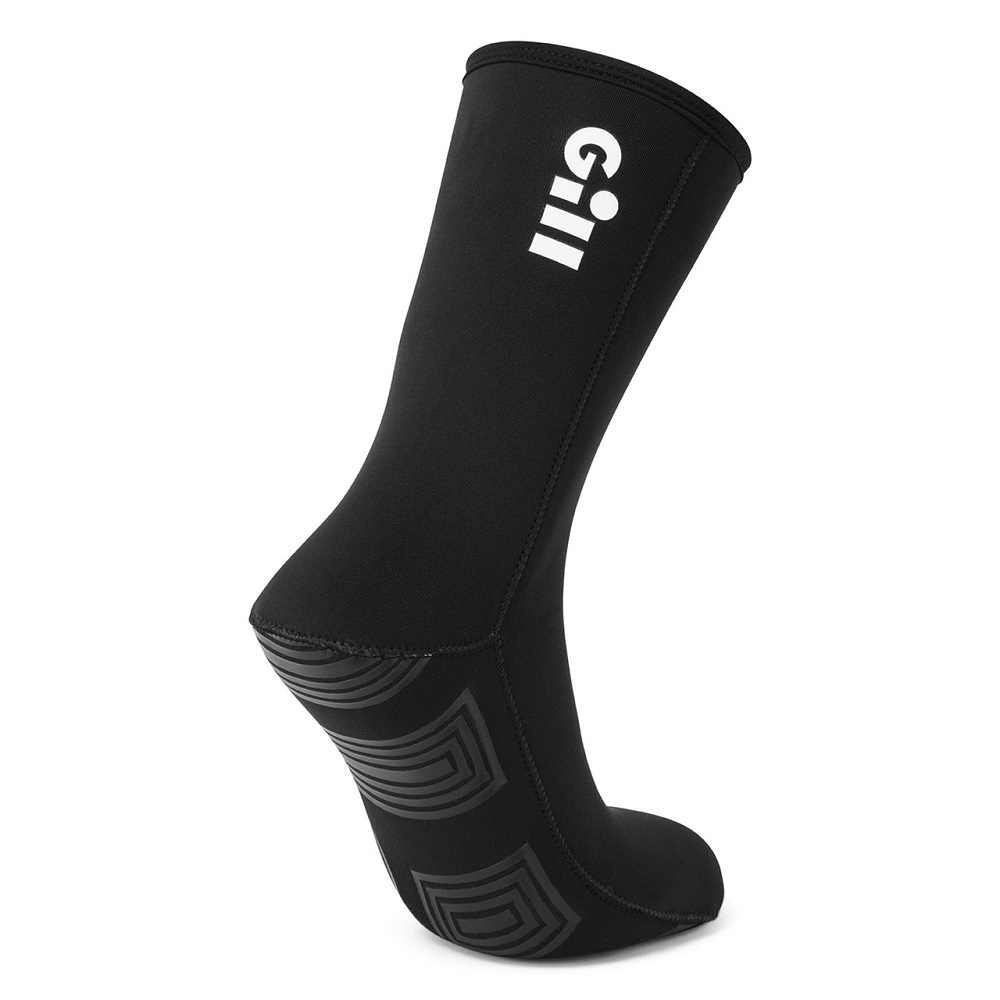
Key Benefits of Neoprene Sock
Neoprene socks provide numerous advantages for outdoor enthusiasts and water sports lovers. Their unique material makes them ideal for various challenging conditions. Here are the key benefits that make neoprene sock stand out.
Waterproof and Insulating Properties
Neoprene socks excel at keeping your feet dry in wet conditions. The neoprene material is inherently waterproof, ensuring no water seeps through during activities. Their insulating properties are highly effective at maintaining warmth in cold water or chilly environments. Even when wet, neoprene sock retain heat, providing reliable comfort for prolonged outdoor use.
Durability and Longevity
The durability of neoprene socks is another major benefit. Neoprene’s robust construction ensures they withstand tough conditions and rough terrains. Reinforced stitching and abrasion-resistant materials contribute to their long lifespan. Whether you’re hiking, paddleboarding, or camping, neoprene socks resist wear and tear, ensuring years of reliable performance.
Comfort and Fit for Various Activities
Neoprene socks are designed to deliver comfort during diverse activities. Their flexible material molds to the shape of your feet, offering a snug yet non-restrictive fit. They prevent chafing and skin irritation, making them perfect for extended use. From water sports to hiking expeditions, neoprene socks adapt to different footwear, ensuring maximum comfort and performance.
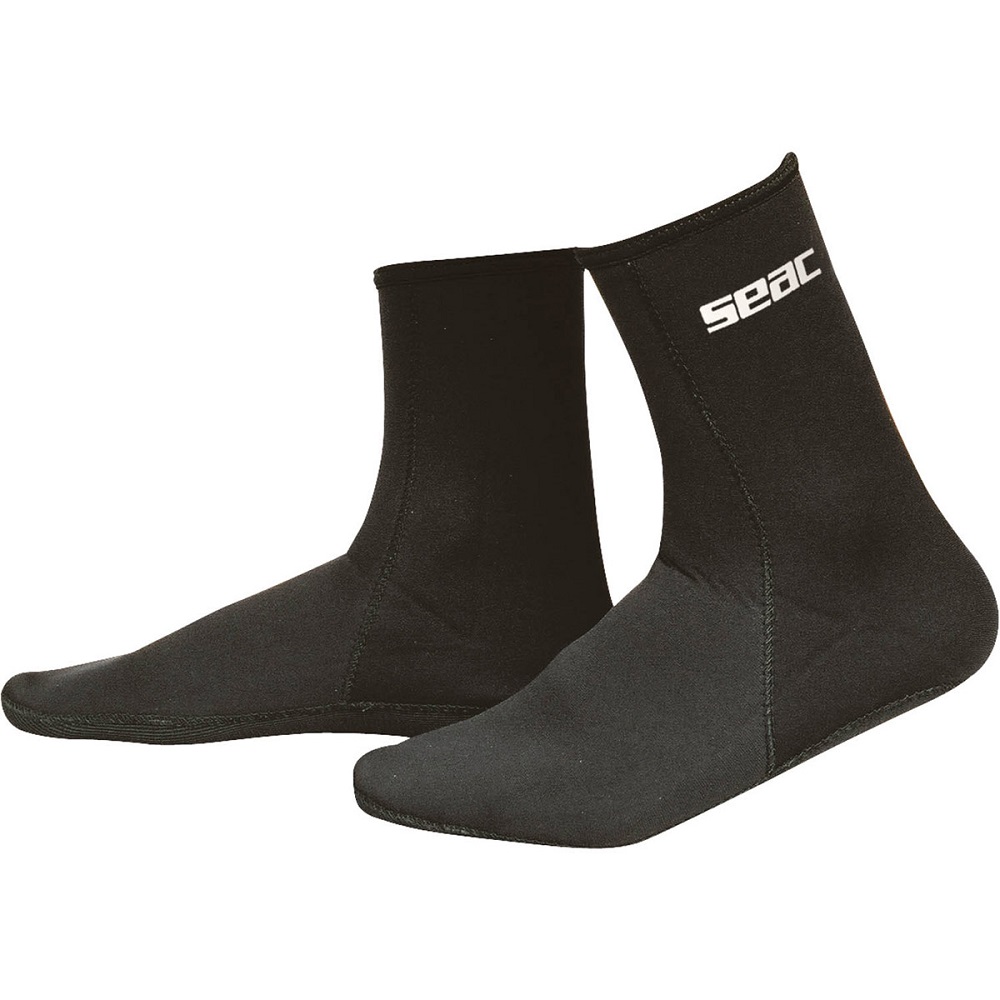
Common Uses for Neoprene Sock
Neoprene socks are versatile and designed for various activities. Their durability and insulation make them a favorite choice for outdoor and water sports enthusiasts. Below are common ways neoprene socks are used across different activities.
Outdoor Sports and Activities
Neoprene socks are ideal for outdoor sports due to their waterproof and thermal properties. Trail runners and cyclists use them to keep feet dry and warm in wet or cold environments. They also protect against dirt, mud, and uneven terrains, ensuring comfort during intense activities. Their snug fit prevents blisters and irritation, making them perfect for long-duration outdoor adventures.
Surfing, Paddleboarding, and Water Sports
For water sports like surfing, paddleboarding, kayaking, and snorkeling, neoprene socks excel in performance. They prevent cold water from making your feet uncomfortable, especially during prolonged exposure. The socks provide an extra layer of grip inside water shoes or flippers, improving stability and control. Their waterproof and quick-drying qualities ensure you stay comfortable throughout your aquatic activities.
Hiking and Camping Applications
Hikers and campers rely on neoprene socks for protection against moisture and cold. They reduce the risk of developing wet feet during stream crossings or rain. The insulation provided by neoprene keeps feet warm even in chilly conditions. Moreover, their durability makes them suitable for rough terrains and extended wear, ensuring maximum comfort and protection for outdoor exploration.
Comparing Neoprene Sock to Other Socks
Neoprene socks offer unique advantages compared to traditional sock materials. However, they aren’t ideal for every scenario. Below, we examine their strengths and limitations compared to wool and cotton socks.
Advantages Over Wool and Cotton Socks
- Waterproof Performance: Neoprene socks resist water, unlike cotton, which absorbs moisture and dries slowly. This makes them ideal for wet environments.
- Insulation in Wet Conditions: Wool provides warmth but loses insulation effectiveness when wet. Neoprene performs well in both dry and wet conditions, retaining heat and keeping feet warm.
- Durability: Cotton and wool socks wear out faster in rough terrains. Neoprene socks are more durable, lasting longer even in challenging environments.
- Flexibility: Neoprene’s stretchy material ensures a snug and comfortable fit. Cotton and wool lack this adaptability.
- Easy Maintenance: Neoprene socks are easier to clean and quick to dry compared to wool, which can shrink, or cotton, which may take longer to dry.
Scenarios Where Neoprene Isn’t Ideal
- Hot Weather Conditions: Neoprene socks are less breathable than wool or cotton, potentially causing overheating in hot weather.
- Casual Comfort: For regular, everyday use in mild conditions, cotton socks are more comfortable and cost-effective.
- Lightweight Needs: Wool and cotton are lighter options for casual activities. Neoprene may feel bulkier.
- Cost Comparison: Neoprene socks are typically more expensive. For routine use, wool or cotton is a budget-friendly choice.
Neoprene socks excel in specialized activities like water sports, hiking, and cold environments. However, they may not be the best option for casual settings or warm climates. Understanding their advantages and limitations helps you choose the right socks for your needs.
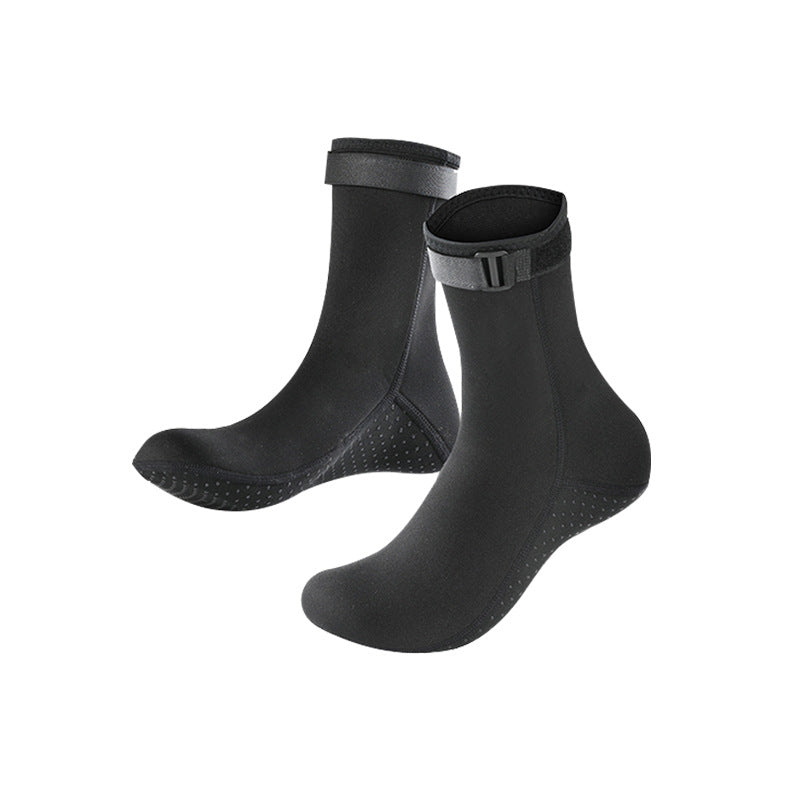
Maintenance and Care for Neoprene Sock
Proper care is crucial for maintaining the durability and efficiency of neoprene socks. Regular cleaning and correct storage extend their lifespan and keep them in top condition.
Cleaning and Drying Tips
- Rinse After Each Use: Rinse your neoprene sock with fresh water after use. This removes salt, sand, or dirt.
- Use Mild Detergents: Wash with mild soap or specialized neoprene cleaner for thorough cleaning. Avoid harsh chemicals.
- Hand Wash Only: Always wash neoprene sock by hand. Avoid washing machines, which can damage the material.
- Dry Thoroughly: Air-dry socks in a shaded and ventilated area. Avoid direct sunlight, which can degrade neoprene.
- Avoid High Heat: Never use dryers or heaters. Heat can cause neoprene to crack or lose its shape.
Storage Advice to Maintain Quality
- Keep Away From Sunlight: Store socks in a cool, dark place to prevent material damage from UV rays.
- Avoid Folding: Lay socks flat or hang them using a padded hanger. Avoid folding to prevent creases.
- Use a Breathable Bag: Store neoprene socks in a mesh or breathable bag. This prevents moisture buildup and mold.
- Check for Damage: Inspect socks before storage. Repair small tears to prevent them from worsening over time.
- Avoid Heavy Weights: Ensure no heavy objects press on the socks. This helps maintain their original shape.
By following these care tips, neoprene socks remain functional and comfortable for extended use.
How to Choose the Right Neoprene Sock
Selecting the perfect neoprene socks depends on your activities and specific requirements. These factors ensure the socks provide comfort, durability, and functionality in different environments.
Thickness and Design Options
- Thickness Selection: Thicker neoprene sock offer better insulation in colder environments. They are ideal for activities like winter hiking or ice fishing. Thinner options are better suited for warm weather or casual water sports.
- Activity-Specific Designs: Choose designs tailored to your activity. Low-cut socks fit best inside water shoes, while high-cut options provide protection for hiking and camping in rugged terrains.
- Grip Patterns: Some neoprene socks feature textured soles for enhanced grip. These are useful when dealing with slippery surfaces like wet rocks or the deck of a boat.
- Fit and Comfort: Ensure the socks fit snugly without restricting movement. A well-fitting sock minimizes chafing and enhances performance during extended use.
Price vs. Quality Considerations
- Budget-Friendly Options: Basic neoprene socks are affordable and suitable for casual use. These work well for occasional water sports or mild activities.
- Premium Features: High-quality socks often come with reinforced stitching and advanced insulation. Although more expensive, they last longer and withstand extreme conditions.
- Durability vs. Cost: Invest in durable neoprene socks if you engage in intense activities. Cheaper options might wear out quickly on rough terrains.
- Brand Reliability: Consider reputable brands known for producing high-quality neoprene sock. Established brands often offer better warranties and support.
By considering these factors, you can choose neoprene socks that meet your performance, budget, and comfort needs.
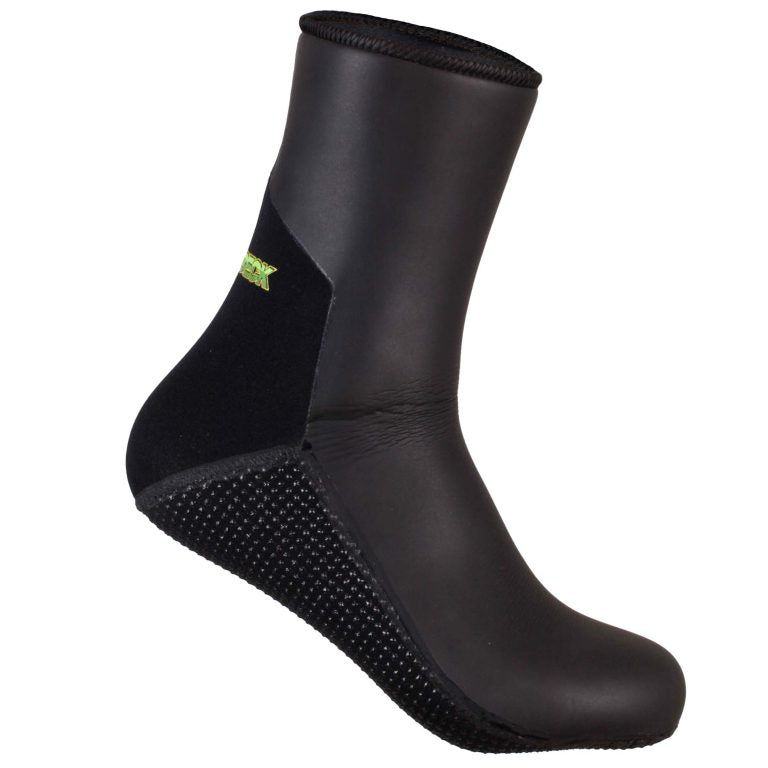
Frequently Asked Questions About Neoprene Sock
Are Neoprene Socks Suitable for All Seasons?
Neoprene socks are useful in different weather but perform best in cold or wet conditions. Their insulating features keep feet warm in winter activities like hiking or water sports. However, neoprene retains heat and might not be comfortable in hot weather. For warm climates, breathable alternatives like wool or cotton are better. If your activities involve exposure to cold water, neoprene socks are a great choice year-round.
Do They Cause Sweating or Discomfort?
Neoprene’s waterproof structure can reduce breathability, which may lead to sweating in hot conditions. In colder climates, they maintain comfort by keeping feet warm and dry. Properly fitted neoprene socks minimize irritation or friction. Choosing thinner neoprene sock for mild activities can reduce discomfort. If sweating is a concern, pair neoprene sock with moisture-wicking liners to enhance breathability.
Fashion Meets Functionality
Style Options in Neoprene Sock
Neoprene socks are not just functional; they also come in a variety of stylish options. Manufacturers have recognized the growing interest in fashionable options for outdoor gear. Today, neoprene socks are available in numerous patterns, colors, and styles, catering to diverse tastes. From bold designs to subtle hues, there is a pair that can suit any wardrobe or outdoor ensemble. This means that they can seamlessly fit into your lifestyle, whether you are heading out for an adventure or simply lounging by the pool.
Personal Expression
Wearing stylish neoprene socks allows individuals to express their personalities. As the outdoor and athletic gear market evolves, incorporating unique designs into functional clothing is now possible. Customization options from some brands enable customers to design their socks, adding an extra layer of personalization. With this, not only are you investing in a product that improves performance and comfort, but you are also embracing a fashion statement that reflects your individuality.
The Future of Neoprene Sock
Technological Advancements
As technology progresses, so do the materials and design of neoprene socks. Manufacturers continually explore innovative ways to enhance comfort, durability, and overall performance. New developments like improved moisture-wicking technology or lighter-weight neoprene options are becoming available. Designers are also innovating with added features such as reinforced seams and anti-odor properties. These advancements ensure that neoprene sock not only meet the demands of enthusiasts but also contribute to a more enjoyable user experience.
Integration with Smart Technologies
Looking ahead, there may be potential for integrating smart technologies into neoprene sock. Innovations such as temperature control, moisture regulation, and built-in sensors could revolutionize how we use socks in activities. Imagine socks that monitor your foot temperature or detect moisture level, thereby providing real-time feedback on comfort. This integration would be beneficial for athletes seeking to optimize their performance and for everyday users aiming for comfort. As the world advances, it is fascinating to consider how these developments might influence the evolution of neoprene sock.
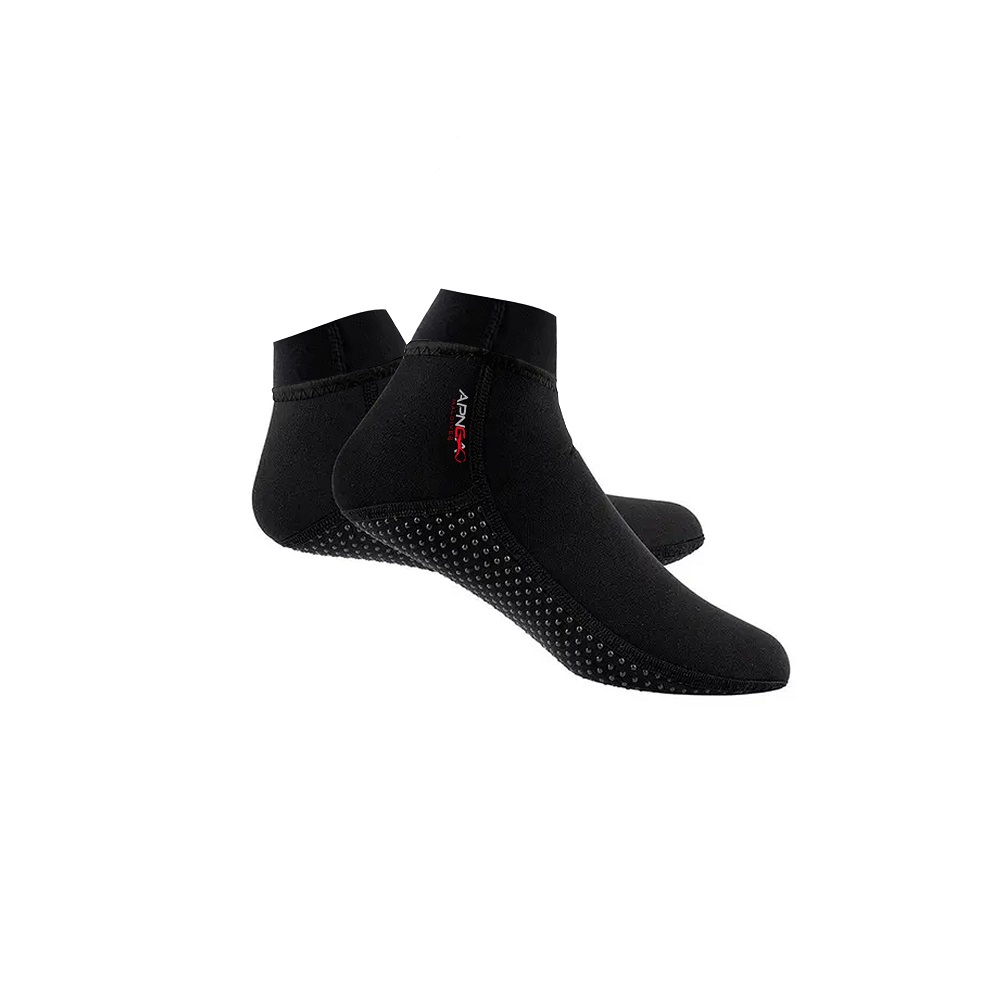
Embrace Neoprene for Versatility and Comfort
Neoprene socks have established their place as essential gear for various activities, be it water sports, hiking, or everyday use. Their unique properties, including thermal insulation and moisture-wicking abilities, make them suitable for multiple environments. Choosing the right pair, considering thickness, style, and brand, can make a significant difference in comfort and performance.
The stylish options available today allow users to express themselves while enjoying the benefits of neoprene. As advancements continue to develop in material and technology, the future looks promising for neoprene socks. By embracing these innovations, you can experience unparalleled comfort and performance in your activities. So, whether you are riding the waves or enjoying a hike through the woods, neoprene socks can enhance your experiences and keep your feet feeling great. Invest in a quality pair and enjoy the benefits that neoprene offers!
